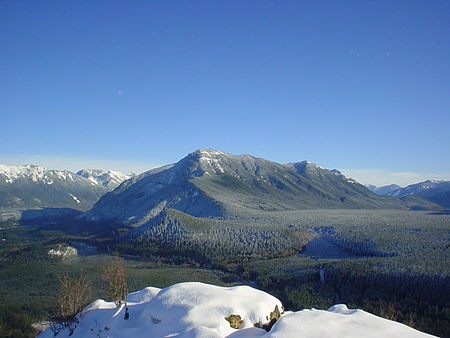Mount Washington (Cascades)
King County, Washington geography stubsMountains of King County, WashingtonMountains of Washington (state)

Mount Washington is a small mountain in the US state of Washington roughly 30 miles (48 km) east-southeast of Seattle, Washington along Interstate 90. It lies on the western margin of the Cascade Range just above the coastal plains around Puget Sound, and is southeast of nearby town of North Bend. Once known as Profile Mountain, Mount Washington was named due to a cliff resembling a profile of George Washington when viewed from an angle.The hike to the top of Mt. Washington is known for its view. Cedar Butte lies at the west end of the mountain.
Excerpt from the Wikipedia article Mount Washington (Cascades) (License: CC BY-SA 3.0, Authors, Images).Mount Washington (Cascades)
Mount Washington Trail,
Geographical coordinates (GPS) Address Nearby Places Show on map
Geographical coordinates (GPS)
| Latitude | Longitude |
|---|---|
| N 47.425938 ° | E -121.7001055 ° |
Address
Mount Washington Trail
Mount Washington Trail
Washington, United States
Open on Google Maps






